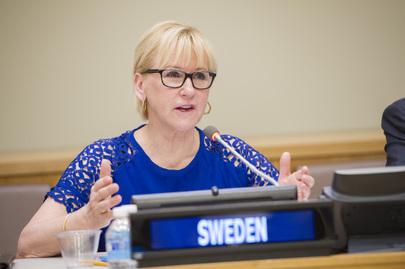Member States and WPS Financing
Margot Wallstrom

Member States are responsible for implementing the Women, Peace and Security Agenda at a national level. National Action Plans (NAPs) and Regional Action Plans (RAPs) on UNSCR 1325 are one key mechanism for implementation. Although the 2015 Global Study on UNSCR 1325 affirmed that NAPs should include an allocated budget, only about 15% (9 of 61 NAPs as of July 2016) action plans do so, which weakens accountability and impact.
Member States have other sources of obligations to fund the Women, Peace and Security Agenda, too. There are various international treaties and conventions that impose obligations on states to fund women’s rights including including in conflict settings, or have direct implications for this issue. This includes the (1979) Convention on the Elimination of all Forms of Discrimination Against Women (CEDAW), the (1995) Beijing Declaration and Platform for Action, and the Monterrey Consensus. Other mechanisms that can support effective implementation of the Women, Peace and Security agenda include gender responsive budgeting, enhanced accountability for defense and security budgets, and gendered aid on peace and security. However, these mechanisms are inconsistently integrated into budgets due to chronic gender blindness including at national levels. Thus, gender equality and Women, Peace and Security Agenda funding more broadly remain generally underfunded at the national level.
Facts and figures on National Action Plans
- In 2014, only 11 out of 47 NAPs had a specific budget (Global Study, 2015).
- During the October 2015 UNSCR 1325 15th anniversary debate only 18 out of 110 countries who made a statement made financial commitments to support the implementation of the Women, Peace and Security agenda.
- In addition, within the 18 country statements made, there were only 23 financial commitments made directly to the funding of Women, Peace and Security action, and many just reaffirmed existing financial commitments, rather than dedicating new funding and financing for the Women, Peace and Security Agenda.
